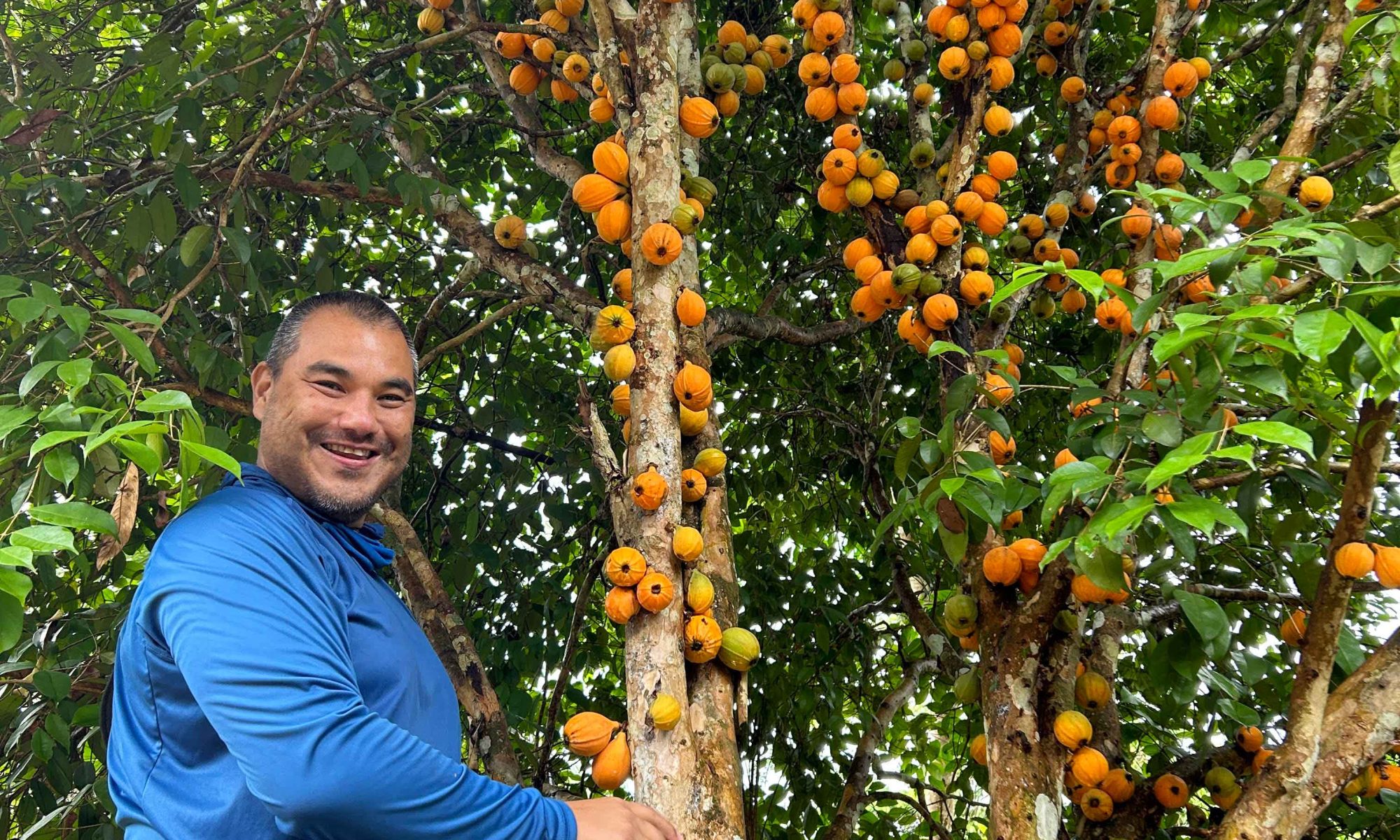If you find yourself on Hapa Joe’s website Hapajoesnursery.com you are presented with an introduction that is certainly better than anything we could come up with, viz:
Connecting you to the world’s rarest, most exotic fruit seeds.
“… I’m Hapa Joe, a passionate conservationist, scientist, fruit hunter and adventurer. I travel the world to collect and source exotic and rare fruit seeds to share with you.”
What Joe doesn’t mention is that he is a member of our chapter and has kindly granted us an extremely coveted invitation to visit his growing field… to learn about the collecting and growing of these very rare seeds and seedlings, and of course to hear of his adventures in the Amazon and beyond.
On his site, he goes on to say: “All seeds and seedlings have been “fair trade” sourced to create value within the local communities that inhabit these rapidly deforested areas.” This means that he has established close relationships within those local communities and we will get to hear about those as well. And of course about the current risks these communities are facing. This is truly a one-of-a-kind field trip.
Feel free to browse the site to get some idea of the vast numbers and varieties of seeds and seedlings he offers…. some of which he will have available for sale. When he spoke to the San Diego chapter recently, Joe sold out of what he calls his “cheap seedlings”, so bring dinero if you’re exotic fruit inclined.
Long time members know the rules about field trips: no touching, no picking, no stomping, no requests for scions or fruit, etc. but if you are a new member please keep in mind that we are very very lucky guests and should behave accordingly: keep those hands and feet in check. Despite his vast collection, Joe’s yard is actually very small, so – as is true of most field trips — no guests will be allowed.







